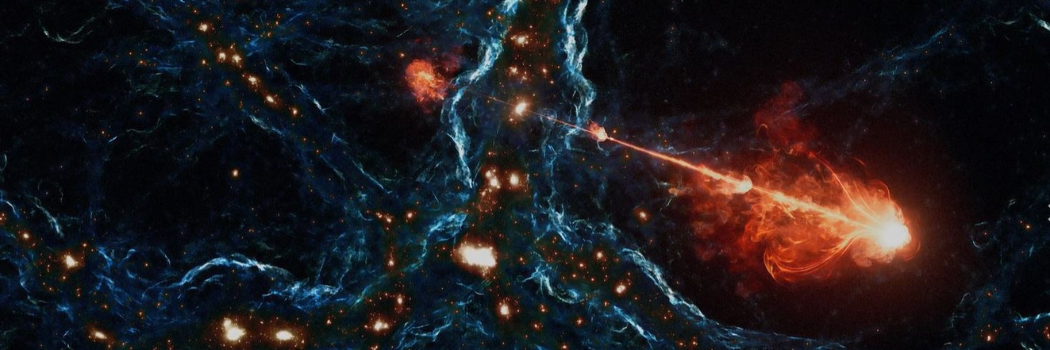
A Durham physicist is part of an international research team that has discovered the biggest pair of black hole jets ever seen in space, spanning 23 million light-years in total length.
The jets' size is equivalent to lining up 140 Milky Way galaxies back-to-back.
The research was led by the California Institute of Technology (Caltech) and involved scientists at multiple universities, including Dr Roland Timmerman of our Department of Physics.
The jet megastructure discovered by the researchers is nicknamed Porphyrion after a giant in Greek mythology.
It dates to a time when our Universe was 6.3 billion years old - or less than half its present age of 13.8 billion years
These fierce jet outflows - with a total power output equivalent to trillions of suns - shoot out from above and below a supermassive black hole at the heart of a remote galaxy.
International observation stations
The gargantuan jet system is the biggest found so far during an ongoing sky survey that has revealed more than 10,000 of the megastructures.
The jets were found using the LOFAR (LOw Frequency ARray) radio telescopes in the UK and Europe.
The team also used the Giant Metrewave Radio Telescope (GMRT) in India and conducted observations at the W. M. Keck Observatory near the summit of Mauna Kea, Hawai'i.
Expanding our understanding of the Universe
Dr Timmerman calibrated the high-resolution data from the LOFAR telescope.
This helped determine the correct host galaxy of the supermassive black hole which produced the jets.
The findings suggest that these giant jet systems may have had a larger influence on the formation of galaxies in the young Universe than previously believed.
Porphyrion existed during an early epoch when the wispy filaments that connect and feed galaxies, known as the cosmic web, were closer together than they are now.
That means enormous jets like Porphyrion reached across a greater portion of the cosmic web compared to jets in the local universe.
As a next step, the team would like to find more jet megastructures with LOFAR by applying the high-resolution techniques Dr Timmerman developed to most of the northern sky.
The research has been published in the journal Nature.
Main image: An artist's illustration of the longest black hole jet system ever observed, nicknamed Porphyrion after a mythological Greek giant. Credit: E. Wernquist / D. Nelson (IllustrisTNG Collaboration) / M. Oei






